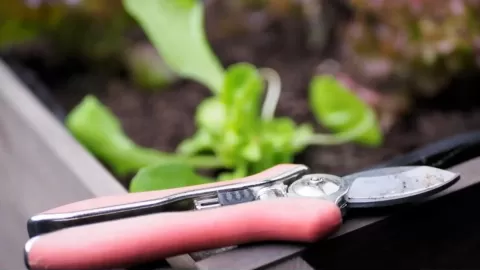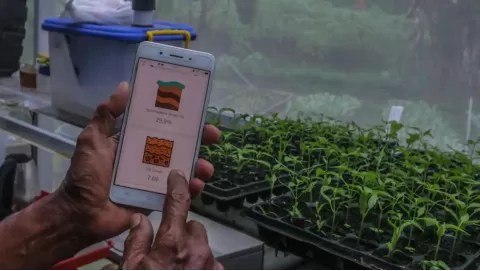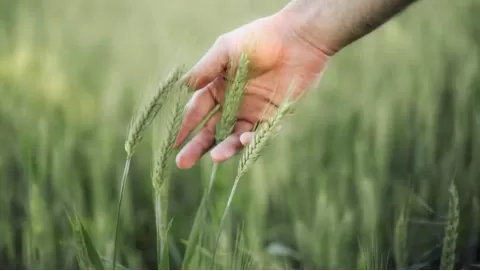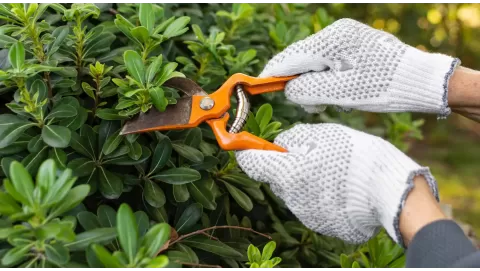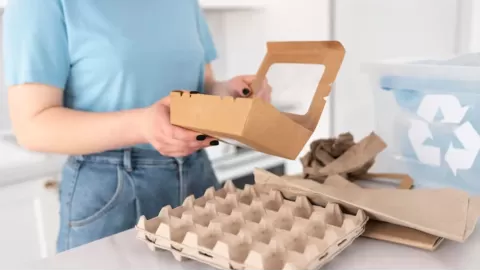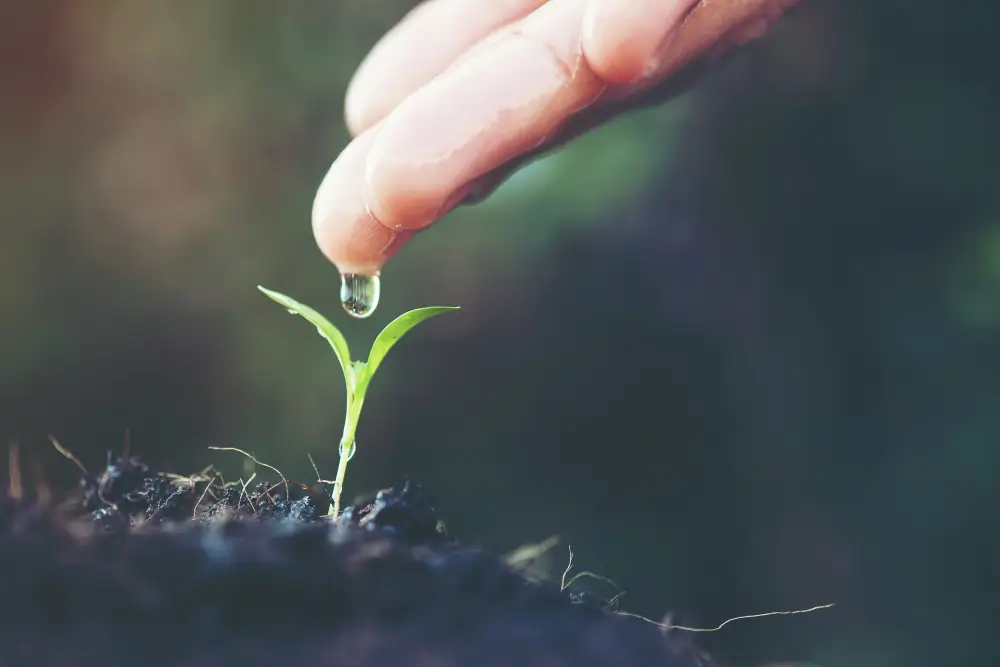
Mastering Plant Nutrition: How to Use a Truncheon Meter for Optimal Growth
Plants require the proper tools in a garden to grow healthy. The Truncheon meter is an essential tool for this purpose. It helps keep plants healthy and provides the right nutrient solution for each plant in the garden. This handheld device measures the electrical conductivity (EC) of nutrient solutions. It provides precise details regarding soil or hydroponic solutions' salinity and nutrient content.
A truncheon meter helps find problems with nutrient levels at an early stage. It is important because different plants need different nutrients, and getting the balance right is vital for good plant health. Regularly checking the EC levels allows for adjustments in nutrient concentration, helping to create a better environment for plants to thrive. Using this tool makes gardening easier and helps plants grow better.
Buying a truncheon meter saves money for all gardeners, and Growcycle offers great options to buy this device. The cost of a good meter can be less than the money spent on too much fertilizer or plants getting sick from insufficient nutrients. Choosing the best truncheon meter is important for plant health. With the help of these meters, taking care of the feeding plans is easy, as they show the accurate nutrient levels. The designs are simple, so anyone can use these meters, whether new or experienced in gardening.
How Does Truncheon Meter Work?
The truncheon meter measures the electrical conductivity of nutrient solutions, which shows how many salts are dissolved in the water. When submerged in the fluid, the probe sends a tiny voltage across its electrodes. Because the ions in the solution are electrically charged, a measurable current is produced, which shows the amount of nutrients present.
Both millisiemens per centimeter (mS/cm) and microsiemens per centimeter (μS/cm) are used to display the results. Higher numbers mean more nutrients are present in the solution.
A nutrient chart can help understand the best EC levels for different plants. To use the Truncheon meter, calibrate it first following the instructions. Then, place the probe in the solution for a few seconds to check the reading.
A stronger nutrient mix may be needed if the EC level is too low. High levels could mean too many nutrients are present. By regularly checking through the meter, it is possible to adjust nutrient levels based on changing conditions for healthier plant growth.
Importance of Using a Truncheon Meter
Truncheon meter can be used for the following purposes in gardening:
Preventing Over-Fertilization
A truncheon meter is important for stopping over-fertilization. It gives quick data about nutrient levels, which helps avoid using too much fertilizer. Using too much fertilizer can cause nutrient burn in plants, harm the environment, and add extra costs. Keeping the right balance helps create a healthier garden.
Customizing Feeding Strategies
With insights from a truncheon meter, gardeners can create tailored feeding strategies that cater to their plants' specific needs. Different plant species have various nutrient requirements, and understanding the EC levels allows for adjustments in feeding practices, ensuring each plant receives the right balance of nutrients supporting optimal growth.
Monitoring Plant Health
Regular checks of EC levels help spot problems with nutrients. This monitoring is like an early warning system. A truncheon meter makes it easy to find any issues quickly. Identifying these problems early helps prevent visible signs of poor plant health. Taking action at the right time keeps plants healthy and strong.
How to Use a Truncheon Meter for Optimal Growth?
Gardeners can use a truncheon meter with the help of the following steps:
1. Prepare the Solution
Preparing the nutrient solution or soil sample before taking measurements is important. For hydroponic systems, mix the nutrients as directed by the manufacturer. When testing soil, blend it with enough distilled water to make a thick slurry. This step is important for getting accurate readings.
2. Power On the Meter
Turn on the truncheon meter and give it a few moments to warm up. Many meters will show a startup screen. After that, the EC reading will appear.
3. Insert the Probe
Put the probe of the truncheon meter into the nutrient solution or soil mix. The probe needs to be completely underwater for an exact reading. Do not let the probe touch the container's sides, which can change the measurement.
4. Wait for the Reading
Wait a few moments for the meter to settle. The electrical conductivity, or EC level, will be displayed. This reading shows the number of nutrients in the solution.
5. Interpret the Results
Check the EC reading against the best levels for the plants being grown. Different plants need different EC levels for healthy growth. Look at a nutrient chart made for those plants to ensure the right balance. This chart shows the ideal EC levels needed for each type of plant.
6. Adjust Nutrient Levels
Adjust nutrient levels based on the readings. If the EC level is low, more nutrients need to be added. The solution should be diluted with water if the EC level is high. This helps keep the nutrient balance right for healthy plant growth.
7. Regular Monitoring
Regular checks of EC levels are important during the plant growth cycle. Focus on key stages like germination, flowering, and fruiting. Checking frequently helps notice problems early, allowing adjustments to be made to keep plants healthy.
8. Calibrate the Meter
Regular calibration is necessary to keep the truncheon meter accurate. Calibration should follow the manufacturer's instructions. This practice helps ensure reliable readings, which support healthy plants in the garden.
Benefits of Truncheon Meters in Gardening
Gardeners can enjoy the following benefits when they use a truncheon meter for gardening purposes:
Saves Money
Truncheon meters prevent over-fertilization by providing accurate measurements. This leads to less waste in the garden. By using the right amount of fertilizer, costs go down. Also, less spending on extra chemicals helps save money and protect the environment from harmful runoff.
Early Detection of Issues
Monitoring with a truncheon meter helps find nutrient issues quickly. Spotting these problems early can stop growth troubles. Fixing nutrient shortages right away is important. This approach keeps plants healthy and thriving.
Streamlined Gardening Practices
Using truncheon meters makes gardening easier. They give quick and clear readings of nutrient levels. This allows for better choices in caring for plants. Making these decisions quickly saves time. This leads to more productive gardening.
Enhanced Learning
Using a truncheon meter helps new gardeners learn about plant nutrition and growth. This tool shows how nutrients affect plant health. Learning about EC levels helps build knowledge. With this knowledge, gardening skills can improve, making it easier to grow healthy plants. Understanding these concepts can lead to better gardening practices.
Achieving Optimal Nutrient Levels for Healthy Growth
Getting the right nutrients is key for healthy plants. Macronutrients such as potassium, phosphorus, and nitrogen are important nutrients. These support efficient plant growth. Micronutrients are also essential. these include:
- zinc
- manganese
- iron
Different plants need different nutrients, and these demands might alter as the plant grows.
Testing soil or using a truncheon meter can show what each plant needs. This helps to feed plants in the best way possible. Finding problems early allows for quick changes to boost plant growth. For instance, a lack of nitrogen can slow down growth and cause leaves to turn yellow. Too much phosphorus can create difficulties for plants to absorb other needed nutrients.
Tools like truncheon meters measure nutrient solutions accurately. This ensures that adjustments are made based on accurate information, not just on guesses like in old traditional ways of gardening. Combining sustainable practices with good nutrient management can improve gardening success.
Composting, crop rotation, and pest control can help boost soil health and nutrient levels. This leads to stronger plants and bigger harvests. Mixing knowledge, regular checks, and eco-friendly methods is important to get the best results. This combination makes the soil richer and helps plants thrive.
Uses of a Truncheon Meter
This meter can be used for the following reasons:
Hydroponic Systems
In hydroponics, managing nutrients is very important. Truncheon meters measure EC levels accurately. This helps adjust hydroponic nutrient solutions based on plants' needs, as proper adjustments lead to better plant growth.
Consistency in Growth
Regularly measuring EC levels helps keep growing conditions steady. This is important for commercial growers. Consistent conditions lead to even crop quality. It also helps achieve better yield.
Research and Experimentation
Truncheon meters are useful tools for research. They help examine how different nutrient levels affect plant growth in experiments. This leads to new ideas and better methods for gardening. Understanding these effects can improve how plants are grown.
Mistakes to Avoid with Truncheon Meters
Making the right use of the truncheon meter is very necessary. Gardeners must not make the following mistakes when using this:
Inaccurate Calibration
The calibration of a truncheon meter is very important. If the meter is not calibrated often, readings may not be correct, which can cause problems for plant health. Following the manufacturer's instructions helps keep the device accurate, ensuring proper measurements for better gardening.
Ignoring Temperature Effects
Temperature affects electrical conductivity. Temperature changes may result in inaccurate measurements. If temperature is not considered, the EC values may be wrong. Confirming the solution's temperature is essential. After measuring, make temperature-based adjustments to the readings.
Overlooking Regular Cleaning
A dirty truncheon meter gives wrong results. It's essential to clean the probe after every usage. This stops residue from building up. Regular cleaning helps keep the meter working well and ensures accurate measurements.
Lack of Proper Technique
Using the meter correctly is important for accurate readings. It is necessary to set the probe at the proper depth. Follow the instructions that come with the truncheon meter. Doing this helps ensure the right measurements are taken.
Reliance on EC Alone
EC readings are important. However, they are not the only thing to check for plant health. Nutrient ratios matter, too. The pH level is also very important. Both of these factors help plants take up nutrients. A complete view of plant nutrition is best for healthy plants.
Neglecting Time for Readings
Taking measurements too soon after adding nutrients can give wrong results. It is important to wait for the nutrients to mix well. This mixing time helps to get accurate EC level readings. Waiting a little ensures better and more reliable information.
Failing to Document Readings
Not writing down EC levels can cause problems, as important trends may be missed. Keeping a record helps show nutrient levels over time, which is useful for making changes in the future. Tracking readings ensures better gardening results.
Tips and Tricks for Using a Truncheon Meter
Best results can be achieved with the help of the following tips:
Consistent Measurement Conditions
Always take measurements in the same conditions. This helps get accurate results. Try to measure at the same time of day. Doing this reduces changes caused by different temperatures or light levels. Consistency is key for reliable readings.
Use Multiple Samples
Testing multiple samples from different spots in the growing medium or nutrient solution is a good idea. This approach helps find any differences in nutrient levels. Checking various areas makes it easier to see how the nutrients are spread out. This method leads to more accurate readings and helps ensure all plants get what they need.
Allow Solutions to Settle
After mixing new nutrient solutions, let them rest for a few minutes. This waiting time helps all the nutrients dissolve and mix well. This step leads to more accurate measurements.
Keep a Log
A logbook or digital spreadsheet is important for tracking EC readings. This record shows changes over time and helps identify trends in nutrient levels. Keeping track of these readings makes it easier to adjust when needed, which can lead to better gardening results.
Read the Manual
Read the manual for the truncheon meter. Each meter has its own instructions, which explain how to use the meter well and show any special features. Following these tips helps get the best results.
FAQs
What is the ideal EC range for most plants?
The ideal EC range can be different for each plant. For many plants, a common range is between 1.2 and 2.0 mS/cm. Checking specific guidelines for each plant type is a good practice. This helps to ensure proper growth and health.
Can I use a truncheon meter for both hydroponic and soil gardening?
Truncheon meters are useful tools. They can work in hydroponic systems as well as in traditional soil gardens. This flexibility makes them popular among gardeners. They help check nutrient levels in both scenarios, ensuring healthy plants grow using both methods.
How do I properly clean my truncheon meter?
Cleaning a truncheon meter is easy. After every use, rinse the probe with pure water. If necessary, use a mild soap solution. Thoroughly rinse the probe after using soap. This action is important to avoid contamination in upcoming readings.
What should I do if my readings are consistently high or low?
High EC readings mean too many nutrients. Diluting the nutrient solution can help. Check for over-fertilization as well. Low EC readings show plants may not get enough nutrients. This calls for a review of the feeding plan. Adjustments should be made slowly. This helps to avoid shocking the plants.
The Bottom Line
Maintaining plants' health greatly depends on using a truncheon meter. This tool helps show how much nutrients plants have. You should be careful when taking readings, as common mistakes can lead to bad readings. Regular checking and good record-keeping help spot changes over time. This makes it easier to adjust nutrient solutions for plants.
A good quality truncheon meter from Growcycle is a smart choice. It helps measure nutrients accurately and makes gardening easier and more successful. This reduces the chance of nutrient shortages and supports strong plant growth.
Disclaimer: This material is for informational purposes only and should not be relied on for legal, medical, financial, or any other form of professional advice.



